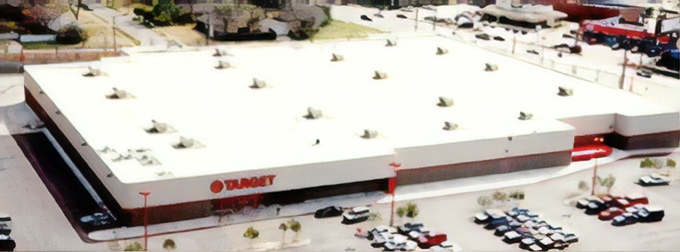LBNL
Long and Short Term Energy Savings of Cool Roofs
A building with a dark colored roof will consume more energy for air conditioning than a “cooler” building – a strain on both operating costs and the electric power grid. Cool roofs offer both immediate and long-term savings in building energy costs.
In a 2001 federal study, “Measured Energy Savings and Demand Reduction from a Reflective Roof Membrane on a Large Retail Store in Austin,” the Lawrence Berkeley National Laboratory (LBNL) measured and calculated the reduction in peak energy demand associated with the surface reflectivity of a vinyl roof on a retail building in Austin, Texas.
Instruments measured weather conditions on the roof, temperatures inside the building and throughout the roof layers, and air conditioning and total building power consumption. Measurements were taken with the original black rubber roofing membrane and then after replacement with a white vinyl roof with the same insulation and HVAC systems in place.
LBNL found that the average daily summertime temperature of the black roof surface was 168 F, but once retrofitted with a white reflective roofing surface; it measured 125 F, a decrease of 43 F.
In conjunction with that, LBNL found that, compared to the original black membrane, the retrofitted white roofing membrane delivered an 11 percent decrease in aggregate air conditioning energy consumption, and a corresponding 14 percent drop in peak hour demand. Without considering any tax benefits or other utility charges, the cool roofing system helped reduce the building’s annual energy expenditures by $7,200 or $0.07/sq. ft.


